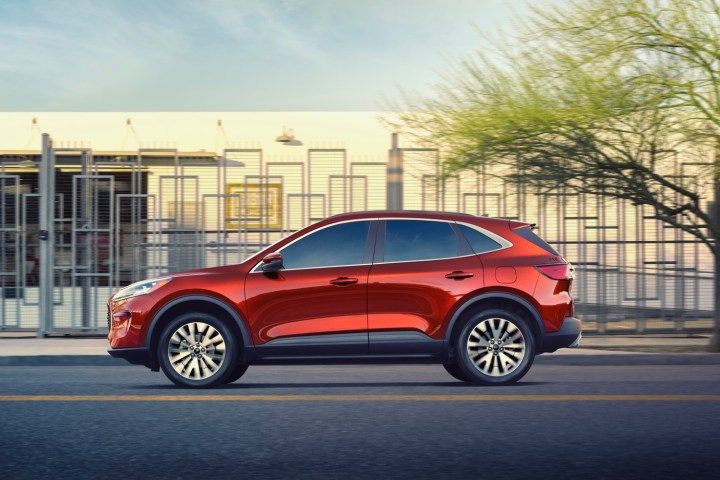
Making cars environmentally friendly is about more than just reducing tailpipe emissions. Changing the materials used in cars can also help lower their environmental impact. Ford is using recycled plastic to make car parts, helping to make the manufacturing process greener and finding a use for a material that can be a major environmental problem when improperly discarded. Ford claims to use about 1.2 billion recycled plastic bottles per year — an average of 250 bottles per car.
Ford uses recycled plastic in the wheel liners of its bestselling F-Series pickup trucks, as well as in the underbody shields for cars and SUVs, including the redesigned 2020 Escape. Underbody shields cover the undersides of vehicles, making a flat surface that improves aerodynamics. They’ve become more common on cars in recent years as a way to help improve fuel economy. In addition to being environmentally friendly, recycled plastic benefits the design of the parts themselves, according to Ford.
“The underbody shield is a large part, and for a part that big, if we use solid plastic, it would likely weigh three times as much,” Thomas Sweder, a Ford design engineer, said in a statement. He said use of recycled plastic “makes sense technically and economically as much as it makes sense for the environment.”
The journey from recycling bin to car part starts with shredding the bottles. Anyone who has ever taken bottles to their local supermarket to redeem those $0.05 deposits should know about that. The shredded material is typically sold to suppliers, who turn it into a fiber by melting down and extruding the plastic, according to Ford. The fiber is then used to make sheets of recycled plastic, which Ford buys to turn into car parts. Finding a use for discarded plastic helps ensure it isn’t simply thrown away, ending up in places like the Pacific gyre, a mass of plastic the size of Mexico floating around the Pacific Ocean.
Ford’s policies when it comes to reducing its environmental impact are a bit contradictory. The automaker is using recycled materials, and has promised to add more hybrids and electric cars to its lineup. But at the same time, Ford is turning its attention away from cars to focus on pickup trucks and SUVs, making the job of improving fuel efficiency that much harder.


